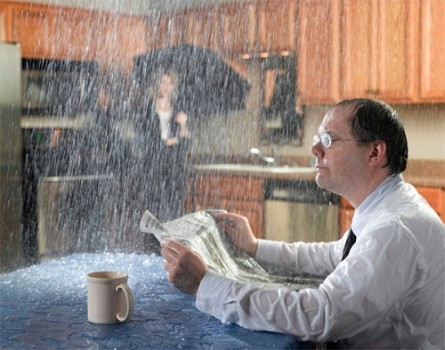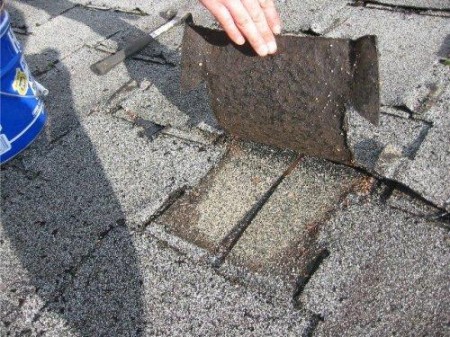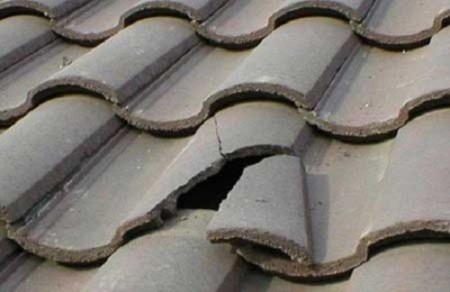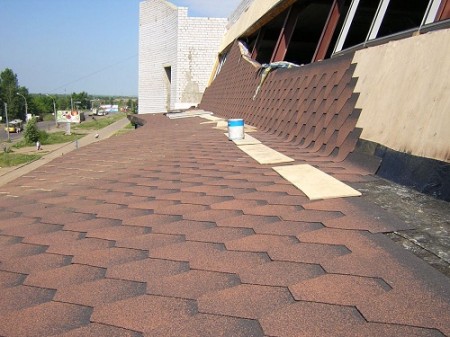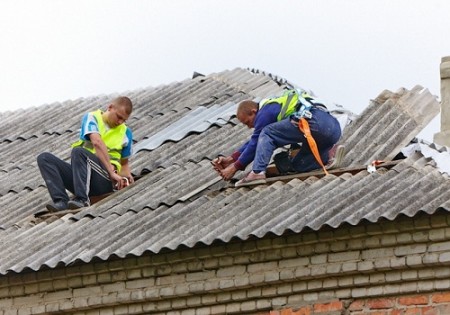Any, even the most insignificant leak in the roof is an emergency situation. Not to mention the fact that living in a house where the walls periodically appear wet spots, to put it mildly, uncomfortable. The most "harmless" consequences from leaks are fungus and mold in living quarters, but the closures of the wiring, and partial or complete collapse of the roof are possible.
Leaks, despite the promise of advertising, are subject to absolutely all types of roofing. Within the framework of this publication, we will consider the main causes of leaks on different types of roofing and possible ways to eliminate them.
Content
Causes of roof leakage
- Damage to the integrity of the roof surface.
- Moisture in the insulation layer.
- Damage to the drainage system.
- Natural wear of the roofing material.
- Infringement of tightness in places of adherence to any vertical construction or an object (antenna, ventilation pipe, etc.)
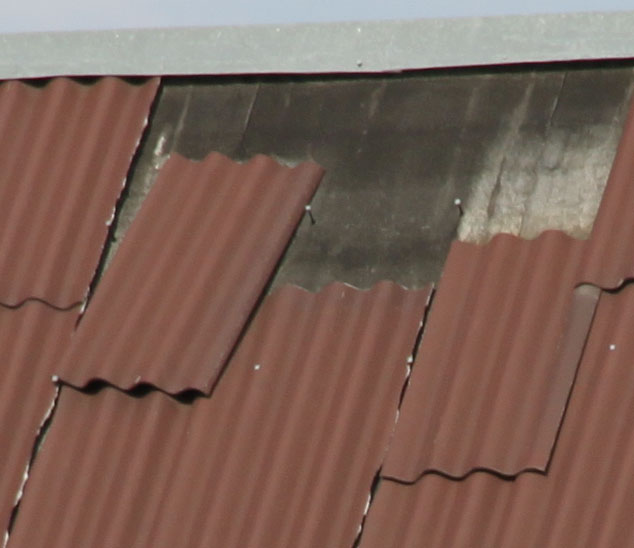
The leaks themselves can be divided into several types:
- Emerging immediately after the rain. The main reason for this type of leakage is damage in the roof or a violation of its tightness in places where it adjoins vertical structures. Leakage can also be caused by the fact that the base itself is broken or the roof waterproofing is damaged. The cause may be a strong wind or the roof is gradually deformed from high temperature loads.
- Leakage from melt water. Their reason lies in the fact that the melt water gradually settles in gutters, valleys, at the eaves of the roof. Frozen thus partially or completely blocks the outflow of melt water, it gets between the joints, and the roof flows.
- "Flickering" leaks. Represents an extremely unpleasant phenomenon. Appear, as a rule, during a strong summer heat and not necessarily after the rain. Their cause is the ingress of moisture into the insulation. As a result, at a sufficiently high temperature outside, water vapor creates a high pressure on the roof surface. In addition, leaks of this type can be caused by the appearance of microcracks in different layers of the roof, as well as defects in the laying of parapets.
Detection of damage to the roof
Determine the place where the roof flows, you can and yourself, but not always. Having risen to the attic, first of all you need to carefully inspect the rafters, flooring, flooring, the condition of the waterproofing, to look closely - there are nowhere any signs of rot and mold. Water usually leaves a dark spot on a clean tree, or it discolours its coating. Be sure to inspect the wiring, if it is in the attic. All damage to the wiring must be rectified immediately.
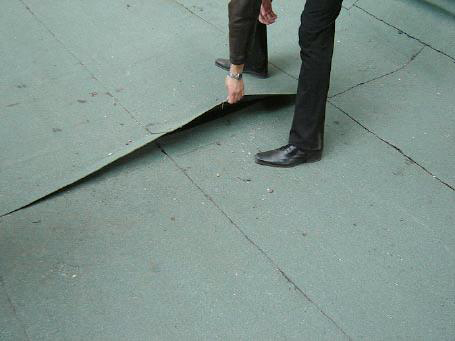
If during the internal inspection the cause of the leakage was not detected, proceed to an external inspection of the roof. Inspect the roof from the ridge, check its integrity. Further, gradually going down the roof, you need to carefully check the valley, is there any debris. It is also necessary to inspect gutters and pipes, the moss and lichen did not multiply on the mews, and there are no mechanical damages on the roof surface.
But it happens that the external examination did not show any defects, and there are leaks. In this case, it is necessary to wait until the heavy rain begins, go up to the attic, see exactly where it flows and mark this place. Then it must be patched.
Do not forget about safety, because the repair of the roof is associated with considerable risk - high, slippery, steep slopes, etc. If possible, it is always necessary to contact specialists, since roof repairs can be quite complicated, require accurate diagnosis and the use of a special tool.
Repair of a roof from a ceramic tile
The main cause of leakage in this case is the cracks on the surface of the tile. The reasons for the appearance of cracks can be different: it is the uneven deformation of different parts of the roof, and also because the material at the junctions between the plates begins to crumble with time. Also, a layer of waterproofing between the rafters and the strip, to which the tiles are attached, can partially collapse.
It is entirely possible to eliminate such damage yourself. All work must be done in the following order:
- From the site, which needs to be repaired, remove all the shingles. Under the plates that lie above, it is necessary to hammer the wedges, the damaged plates are gently pulled with a trowel.
- Pull out the nails with which the rack is attached.
- Preliminarily inserting a piece of hard cardboard under the rail, cut out a piece of slats.
- Using a sharp knife, cut out a damaged piece of waterproofing, make a patch of the same material, and put it in the right place, pre-lubricated with mastic or glue.
- Prepare the missing ends of the slats, treat them with an antiseptic, and nail into place.
- After that, the shingles are put in place.
Repair of the roof from metal
The roof, covered with metal, can begin to leak due to improper installation of the coating, poor quality of fasteners, surface damage. If scratches were found on the surface of the roof, they must be immediately treated with a special paint to protect against rust. If a gap is found between the element and the sheet, it must be sealed with a roofing sealant. The same applies to gaps in all other places - they are eliminated or with the help of a sealant or special adhesive tape.
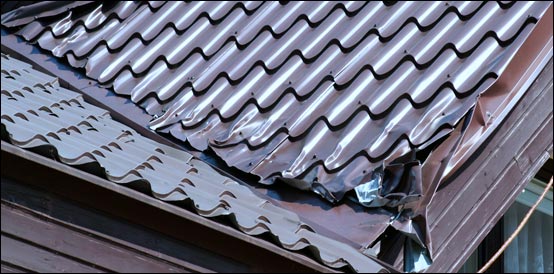
If there is a through hole, it can be patched with a soldering iron, but if there are several, you will have to replace the sheet completely.
Quite a frequent reason for the roofing from the metal tile - poor quality screws, in which a few years later, a metal rubber washer is destroyed. In this case, you need to replace the screws, and not try to just tighten them.
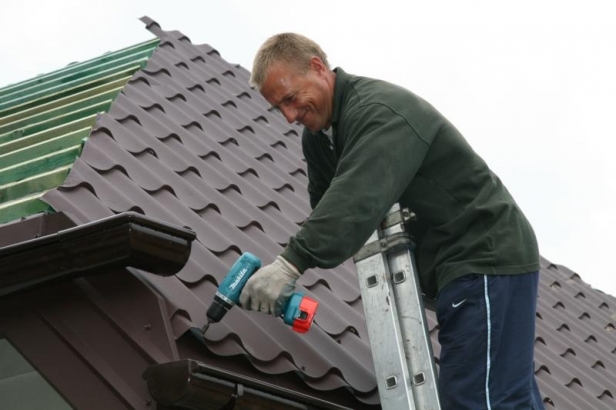
But if the permanent leakage is associated with the wrong arrangement of the so-called roofing cake, then it may be necessary to completely dismantle the sheets of metal roofing for further repairs, and without the help of professionals it is almost impossible to manage.
Elimination of leaks in the soft roof
What is good for a soft roof - all kinds of bituminous shingles are very easy to replace if necessary, thus eliminating leakage. But the repair work should be carried out at a plus temperature of not lower than +5 degrees. If the damage to the tile is insignificant, then it is carefully raised, greased from the bottom with a roofing glue and pressed firmly against the base. The top part of the tile must also be treated with glue for additional insurance. In order to eliminate more serious damage, the tile must be replaced.
Do this as follows:
- First a crowbar lifts the tile top over the damaged row, take out the replacement element.
- Remove the nails with a naildriver.
- On the inside of the tile, glue is applied.
- Gently put a new tile under the top and fix the roofing nails.
- On the edge of the upper tile is applied glue.
Repair of slate roofing
As a rule, it is limited to sealing of chips and cracks.
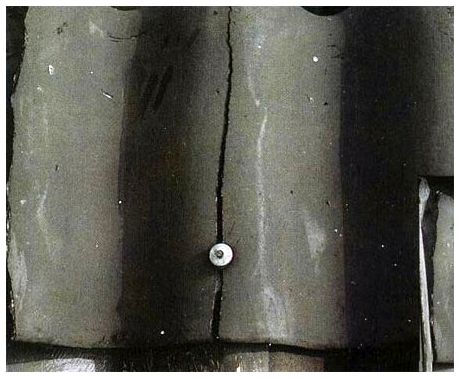
To this end, a cement slurry consisting of two parts of sand and one part of cement is used. To repair the slate roof, you can also use special adhesive tapes, which are produced on a butyl rubber base.
From the tape simply remove the protective paper and glue in the right place. If necessary, the fabric surface of the repair tape can be painted in any color.
As we said above, over time, I begin to leak all kinds of roofs. Therefore, once a leak has been discovered, it must be immediately eliminated in order to avoid more serious consequences.



